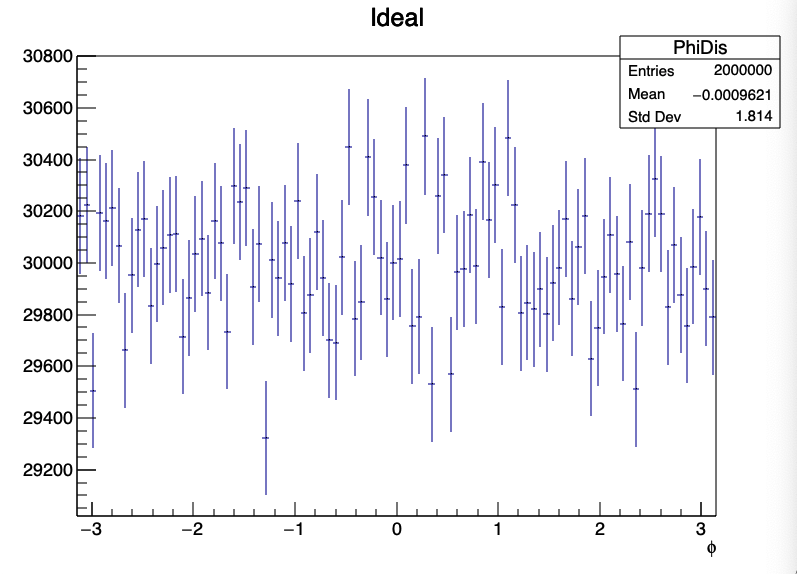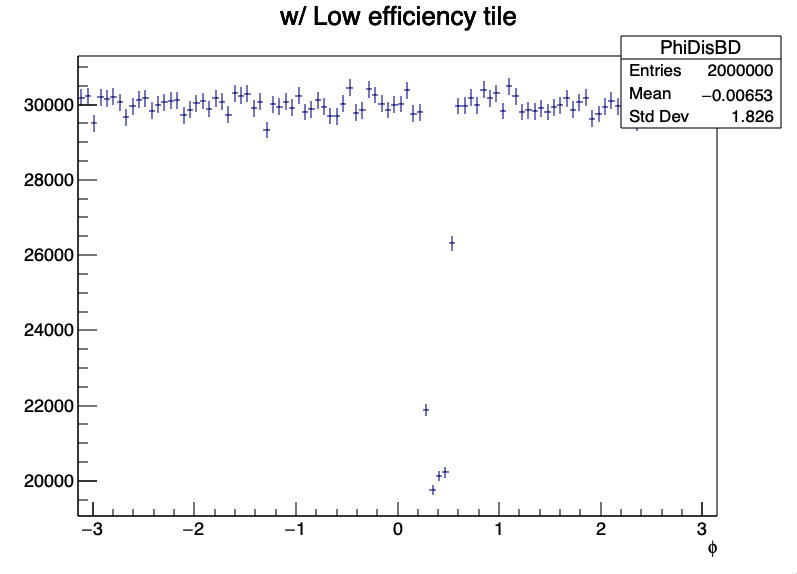Why Event plane distribution is not flat after phi weighting? Why do we need Psi-shifting?
- phi-weighting: weight the track so that the phi distribution is flat.
- Fill a TH1D of phi distribution: PhiDis->Fill(phi)
- the phi weight (when calculating Q-vectors) will be: 1.0/PhiDis->GetBinContent(PhiDis->FindBin(phi));
- Psi-shifting: make the Psi distribution flat with a shift:

Details can be found in this paper:https://arxiv.org/abs/nucl-ex/9805001v2
phi-weighting can be used to correct for, for example, low efficiency of some tiles. An intuitive thought would be that after phi-weighting, the phi distribution becomes flat and therefore the event plane distribution will be flat too. However, it is not true! The event plane distribution might still be unflat and the Psi-shifting will be needed. Here, a simple example will be used to demonstrate why.
Assume an event made of 2 particles with phi1 and 1 particle with phi2 (in this post, phi1-phi2=5pi/6), in nature, the event plane can point to any direction. So if a lot of events are sampled with random EP, a flat phi distribution and Psi distribution will be obtained.


Now, a tile with low efficiency is introduced to the problem. The tile covering pi/12 to pi/6 can at most register one track. e.g if two particles go to that tile, only one track will be recorded. Then we will get an unflat phi distribution with a dip at [pi/12,pi/6] and a unflat Psi distribution.


The above phi distribution will be used to determine the phi weight: if phi in [pi/12,pi/6], wi=1/2, otherwise wi=1/3. From here, we can see the phi weighting changes the relative weights among tracks therefore it changes the Psi. More specifically, it shifts the Psi in the following way:

Obviously, the Psi distribution is unflat even though the phi distribution becomes flat after weighting.
.png)
.png)
- lxy1122's blog
- Login or register to post comments
